An African violet plant is a beautiful addition to your indoor space. They add a variety of color,
interest, and a bit of exotic uniqueness to a collection of flowers. The violets originated in the eastern tropical areas of Africa, namely Tanzania and Kenya, and thrive in rainforests. They resemble violets but are not really in the violet family. They got their name based on their resemblance to violets and their origin. In addition to being a lovely presence in your home, they are always welcome house-warming gifts, as they are pet-friendly. Once in bloom, they will flower for weeks on end.
Some people feel they are hard to grow and maintain. But after reading this post and following these simple instructions, I’m sure you will find them much easier to sustain than you may have thought.
For more information on indoor plants, click All About Indoor Plants.
(As an Amazon Associate I earn from qualifying purchases.)
(Some of the links within this post are affiliate links on which I receive a small compensation for the sale of certain items.)
Lighting – Brightness not Full Sun
African violets thrive in sunlight but not direct sunlight. They need from 8 to 10 hours of indirect, diffused light depending on the variety. Placing them in either an eastern, western, or northern window a foot or two away from the window will provide the proper amount of sunlight. Too much direct sunlight will scorch the leaves and cause the blooms to shed early. Therefore, be careful with southern exposures. They also grow well in artificial light which is easy to control by just flipping a switch.
African violet varieties with darker green leaves require higher levels of light, while those with paler foliage require lower levels of light. In other words, the light to medium shaded leaved plant can be placed a little further away from the light source. Those with dark colored leaves should be placed closer to the light.
Be sure to turn your plant so it does not grow into the light and become unbalanced. A grouping of violets adds a beautiful centerpiece for any area.
Proper Watering – Not Too Much, Not Too Little
African violets like humidity and consistently moist but not wet soil. Stick your finger into the soil. If the soil sticks to your finger from moisture, it does not need watering. If the soil does not stick to your finger, the plant needs to be watered. Do not wet the leaves while watering. This will cause spotting and browning of the leaves. You can pour room temperature water directly onto the soil. As an alternative, place water in a saucer underneath a violet in an appropriate pot that will enable the plant to absorb water from the bottom.
Violets like humidity. I like to place my violets in the kitchen or in a room with some natural humidity. Grouping your violets will increase humidity, but be sure to allow for air to naturally waft around the plants.
African violets do not thrive in drafty, cold areas. Temperatures should not dip below 60 degrees Fahrenheit (15.5 degrees Celsius). Take extra care when placing your violets close to windows in the winter as temperatures seem to fall close to windows, especially if your windows are not energy efficient. Do not place your plant close to a door.
Proper Soil, Repotting and Fertilizer
African violets like well-drained highly organic potting mix. (Amazon) They do not like to sit in wet soil which causes root rot.
When the plant’s roots start to protrude from the pot or the plant seems cramped, gently remove the plant with the surrounding soil from the pot and place it in a pot one size larger. Be very careful because the leaves and stems can snap off easily. Fill the perimeter with potting mix.
There are specific fertilizers for African violets, (Amazon) or you can choose a fertilizer with a higher phosphorous content. A 15-30-15 fertilizer ratio is good for African violets. Use the fertilizer every 2 weeks.
(As an Amazon Associate I earn from qualifying purchases.)
Propagating and Other Tips About African Violets
Propagate
To propagate means “the breeding of specimens of a plant or animal by natural processes from the parent stock. The propagation of plants by root cuttings”. (Definition from Oxford Languages)
African violets are one of the easiest plants to propagate. Just remove a leaf from the middle of the plant where the plant is not too old or not too young. Place the leaf in good potting soil. Water as directed above and watch your leaf multiply and transform into a beautiful full plant.
Because the plants are so easy to propagate, you can gift them to your friends and family as gifts or just to be friendly.
Tips
-
Pinch the dead blooms from the plant to promote more buds.
-
When repotting, make sure the pot has a drainage hole.
-
Gently pull away dead leaves from underneath the bottom leaves.
-
Purchase a self watering pot (Amazon) to prevent mistakes.
The following video is a short version with tips for African violets from HGTV.
Varieties of African Violets
African violets have been around for what seems forever. There have been many species identified, but through the years many were deemed too similar to be a species unto themselves. After researching violets, I was so confused that I just decided to tell you there are thousands of different varieties of African violets! All seem to agree, though, that the main genus-species is Saintpaulia ionantha.
Long story short, here’s a list of the most common varieties along with their pictures from Shutterstock Images.
RS Viomte – large and puffy blooms with white tips
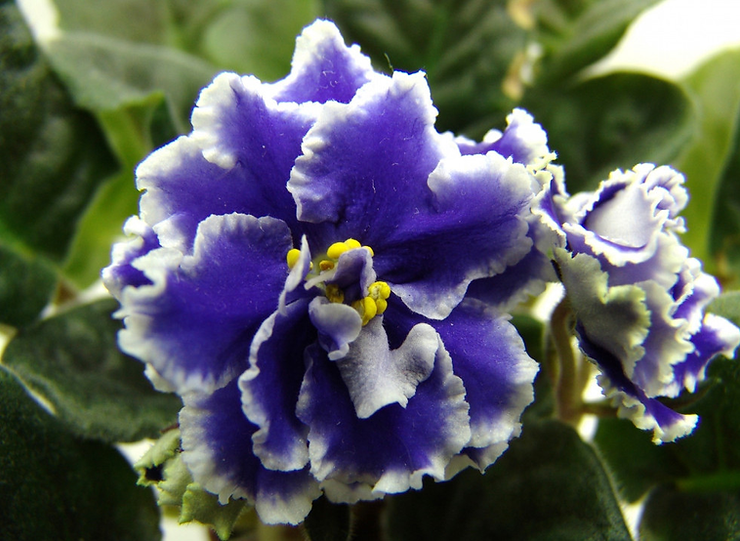
Silver Romance – soft pink petaled flowers outlined in white or green
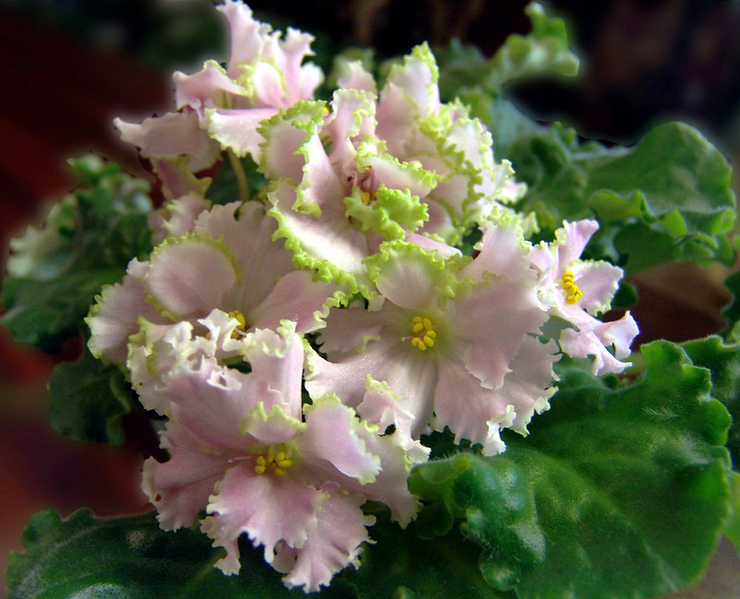
Diamond Tiffany – ruffled blooms with tints of yellow and green on edges
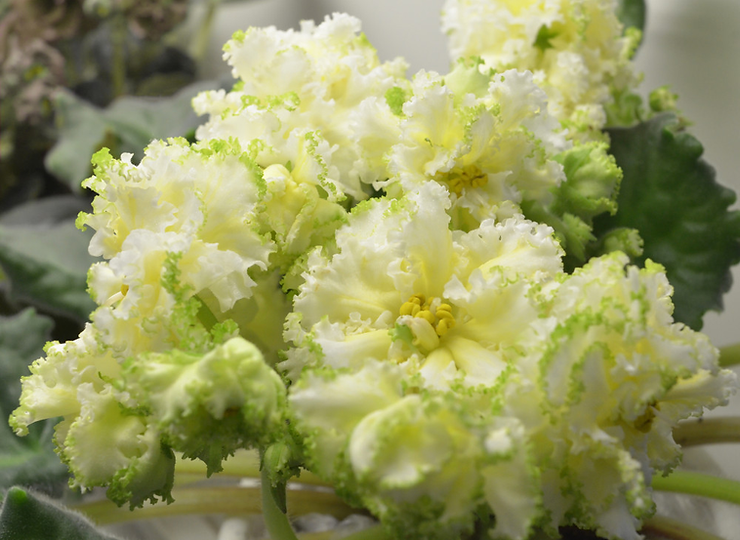
First Kiss Blush – soft pink blooms splashed with purple and with yellow centers
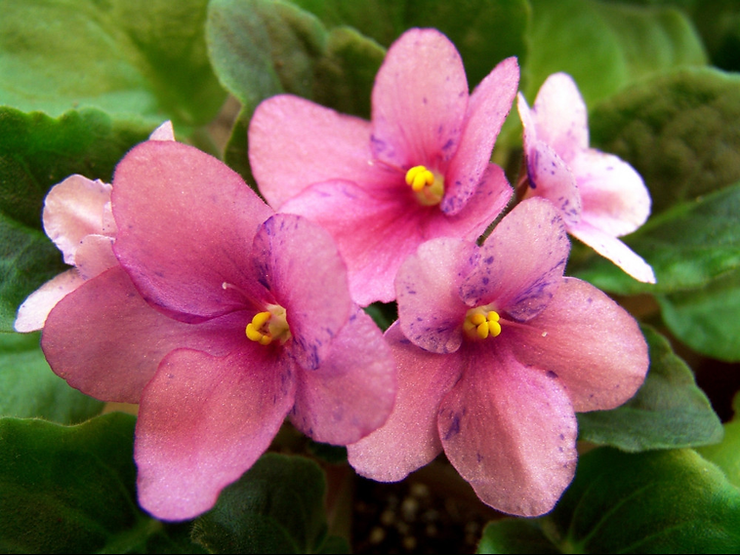
Shamahanskaya Queen – bright pinkish purple petal with laced edges
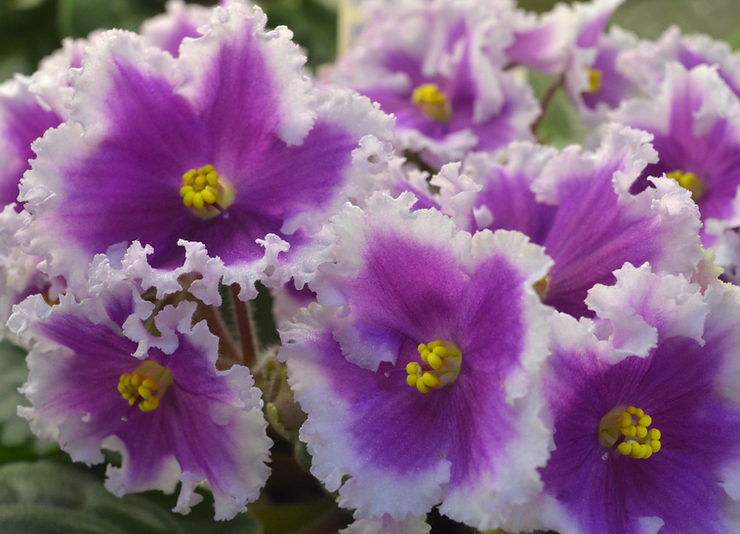
Summer Twilight – purple petal lined with white
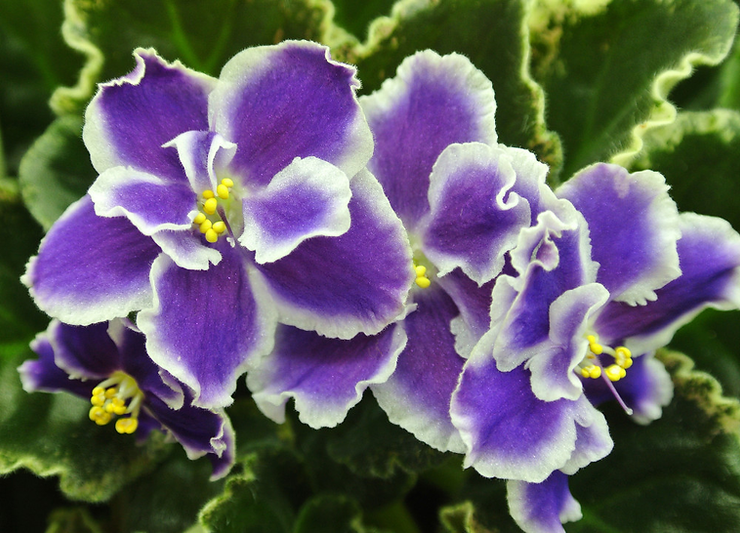
Gold of Scythians – white blooms tinted in yellow and soft pink
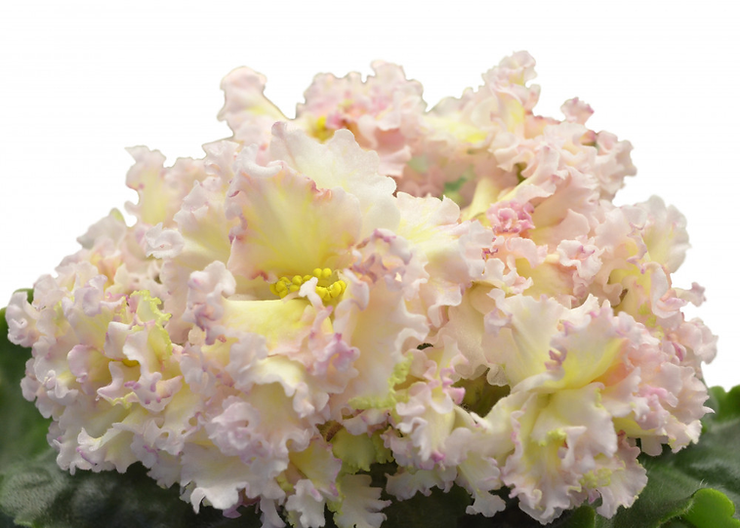
Not So Scary After All!! – Grow African Violets
As you can see from reading my post, an African violet plant is not that difficult to care for. All of the pointers above are important including proper soil, good fertilizer and keeping them cozy in the correct temperature and humidity along with proper watering. But the most important aspect of caring for your African violet, in my opinion, is the lighting. Be sure to follow the instructions for lighting and I’m sure you will be successful caring for your African violets.
If you are interested in learning about other indoor plants, check out my article, All About Indoor Plants.
I hope you enjoyed this post. Please leave a comment below. I’d love to hear from you!
Happy gardening!
Nina
